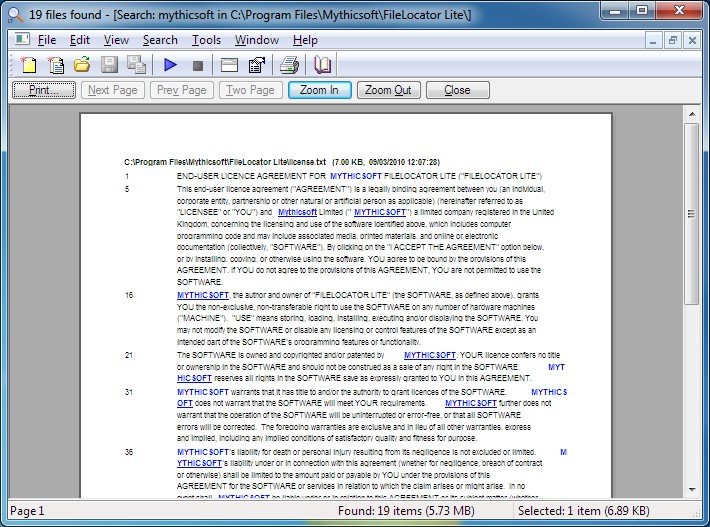
- #HOW TO GET FILELOCATOR PRO TO INDEX FILES HOW TO#
- #HOW TO GET FILELOCATOR PRO TO INDEX FILES PORTABLE#
- #HOW TO GET FILELOCATOR PRO TO INDEX FILES TRIAL#
- #HOW TO GET FILELOCATOR PRO TO INDEX FILES FREE#
He’s done an admirable job tending to the little project over the years and still routinely updates it a few times a year.
#HOW TO GET FILELOCATOR PRO TO INDEX FILES FREE#
Optional: 1 copy of Cath圜md for automated local index updating.Ĭathy is a simple and free tool that the author, Robert Vašíček, originally created back in the 1990s to catalog his collection of MP3 files.What Do I Need?įor today’s tutorial you’ll need the following things: How light weight? The apps take up less than 200k of space and even indexing every local, network, and detached storage device in our entire office only yielded a collection of file indexes around 30MB in size.
#HOW TO GET FILELOCATOR PRO TO INDEX FILES PORTABLE#
Instead you’re going to enjoy dead simple searching, lightening fast catalog creation, and all in a lightweight and portable package you can pluck right off your computer and take with you. You won’t have to perform any arcane edits to Windows, force Windows to jump through any indexing hoops, or any of the other nonsense many guides make you put up with in order to just get Windows to acknowledge that the file “Taxes 2009 1040.pdf” actually exists somewhere in your constellation of data storage.
#HOW TO GET FILELOCATOR PRO TO INDEX FILES HOW TO#
Today we’re going to show you how to index everything from your network shares to your flash drive to the backup hard drive you pull out once a month. If you’ve come to depend on that lighting fast local search that tools like Everything provide, it can be extremely frustrating trying to find files that are beyond the reach of such tools. Once you start dealing with multiple disks, removable media (such as data DVDs, flash drives, backup files on USB HDDs, etc.) and network shares, however, searching gets progressively more difficult if not impossible.

There are great search tools like Everything from VoidTools that rip through your master file table in a fraction of a second to find exactly what you’re searching for. As reference,most drive recoveries can be completed in around 10 to 12 hours for a 1-TB healthy hard drive in general conditions.When every single file you have is stored directly on your computer, it’s easy to find what you need. How long does it take to scan the drive? It strongly depends on the capacity of your hard drive and the performance of your computer. How can I check whether my data is recoverable or not before purchase? The Free version helps you save 2GB files to better verify the recovery quality of our product before purchase. So you should prepare another disk to save the files. If you save the recovered files back to the same drive, the original data structures and data content would be corrupted or overwritten, which causes permanent data loss. Why it’s NOT suggested to recover the files back to the original drive? The storage structure of the lost files would be altered or damaged by any changes on the drive. There is still a chance to recover the data content with the RAW Recovery method in our software. If the files with original file names and folder structures cannot be opened, one possible reason is the corrupted directory info. Why the recovered files cannot be opened? A file is saved as 2 parts on the storage device: directory info (which is comprised by file name, time stamp and size info, etc.) and data content.

The default free space is 500 MB and you may share the product on social media to get another 1.5 GB.
#HOW TO GET FILELOCATOR PRO TO INDEX FILES TRIAL#
Trial has data preview function but cannot save any files, while the Free version enables to recover 2 GB files.

Frequently Asked Questions Why I cannot recover 2GB data for free? It is recommended to check the version installed is Free or Trial because they are different versions.


 0 kommentar(er)
0 kommentar(er)
